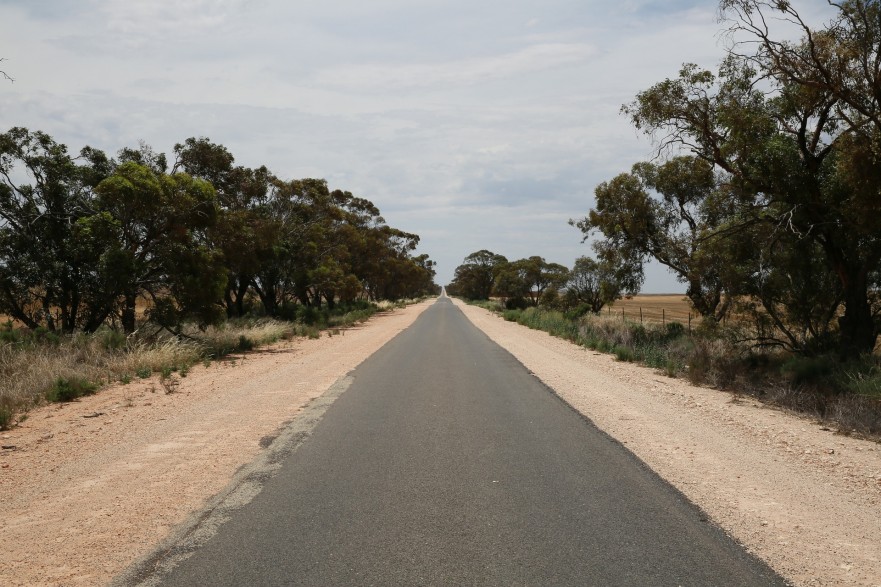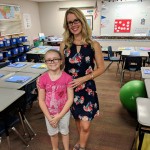Last Monday, Diana did not show up to school. After I take attendance, I habitually ask the class for confirmation of who is missing, just to keep me on my toes. “So, Diana’s absent?”
“Yes.”
“Se fue a Mexico.”
“She went to Mexico? Like, for Christmas?”
“Se mudó a méxico.”
“Yeah, she went back.”
“What!? She did not move to Mexico.” My eyes roved the classroom of 7th graders, evaluating the earnestness or lack thereof on the faces of the five students telling me Diana had moved. “I don’t believe you. Every time someone is absent for a couple of days you guys are trying to convince me they went back to Mexico. Nope. Look… Lilleana is laughing at me right now. Look at the smile on her face.”
“Ok,” bargains the mischievous Lilleana, “if she doesn’t come back you owe us Oreos.”
“Fine. What do I get if she comes back? Because I don’t believe you. She didn’t say goodbye to me” We negotiate and they agree to bring me coffee.
A few days later I was telling a student I was sad because Diana had not said goodbye to me. The student said, “She was going around telling everyone goodbye.”
“Well, she didn’t tell me.”
This scenario is not uncommon. Sometimes a family moves without the student knowing ahead of time. Also, even though I tell them all many times throughout the year that if they leave, I want them to say goodbye, they are often in their little teen bubbles: Friends are the only people who are really people. Sometimes they are just so overwhelmed with (or engaged in) the dynamics of life outside of school that maybe, to cope, they separate the two worlds as much as possible. Even if we get along very well, I am not family.
In this case, I found myself wishing my Spanish was more fluent. I can communicate with students and families in a focused conversation fairly well, but if I understood more of what people around me were casually saying, I might have picked up on the fact that Diana was going around, saying goodbye to her friends that day. If they had used some choice curse words in the conversation, it might have perked my ears, but alas.
I wish more teachers at my school in general spoke Spanish or another language besides English. I look at our student population, and I look at the ethnicity and experience of the teachers around me (and myself): Our faculty and staff looks very little like our student body. There have been moments when I am trying to connect with a struggling student, and despite my efforts to have an impact, a little voice in my head knows that part of them sees me as another white lady trying to teach them English. Even if they know I care about them, I don’t look like them. Our campus is filled with expertise, dedication, collaboration and innovation… but it is not filled with adults of color. This is common in Arizona classrooms, and in classrooms around the country.
What can be done to change these trends? I can’t change who I am, or who my colleagues are. As alternative paths to certification, and opportunities to add additional endorsements to existing certificates seem to multiply almost monthly in an effort to recruit more teachers, I know efforts are being made to reach out to students of color at all levels. Retention may be another story. Sometimes, though, it seems that these programs are geared more toward teachers with existing certifications, to move them to higher need areas, and most of these teachers are white, so that strategy likely won’t increase the numbers of teachers of color in classrooms.
In addition, although many secondary schools are now offering electives and career and technical education courses for students interested in becoming teachers, it’s difficult to promote greater diversity when there are few role models for these students already teaching, and when there are such distinct achievement gaps that often must be overcome.
State universities are realizing the issue and developing strategies to address it. I would guess that increasing teacher salaries might also entice folks from many backgrounds to consider teaching in Arizona, although we still have a long way to go with improved working conditions to make the career sound broadly appealing.
At any rate, for now, my students have me, and I am certainly doing the best that I can. My students will appreciate the Oreos, anyway, but I wish I had had the chance to say goodbye to Diana!










Comments 2
So true. I feel the same way about reaching diverse students. I want so much to embrace different cultures and be sensitive. The challenges is real. This year, I have many families from India in my class. It’s a cool blessing and I’ve been learning a lot about their traditions. I’ve been even more careful than normal about our holiday activities this year to make sure all families feel comfortable–and I’ve been asking families about their preferences. They’ve been so nice to tell me that whatever I do is fine, but really I just want them to teach me more about their family traditions rather than have them accept some of my cultural traditions. Together, we must all continue this work to make all families feel comfortable and connected to the learning environment. I would absolutely LOVE to see an increase in diversity with colleagues. One of the first places to start is to make sure that students today are comfortable and happy enough in schools that they decide to spend their careers there. We can do a lot as educators now to improve diversity of educators in the future. Sounds like you are one who is thinking about these things a lot friend. Great piece!
Author
Thanks, Jess. I also feel like just trying to have the conversations around these issues can be challenging, there is so much to unpeel! So thank you for telling your own story here.